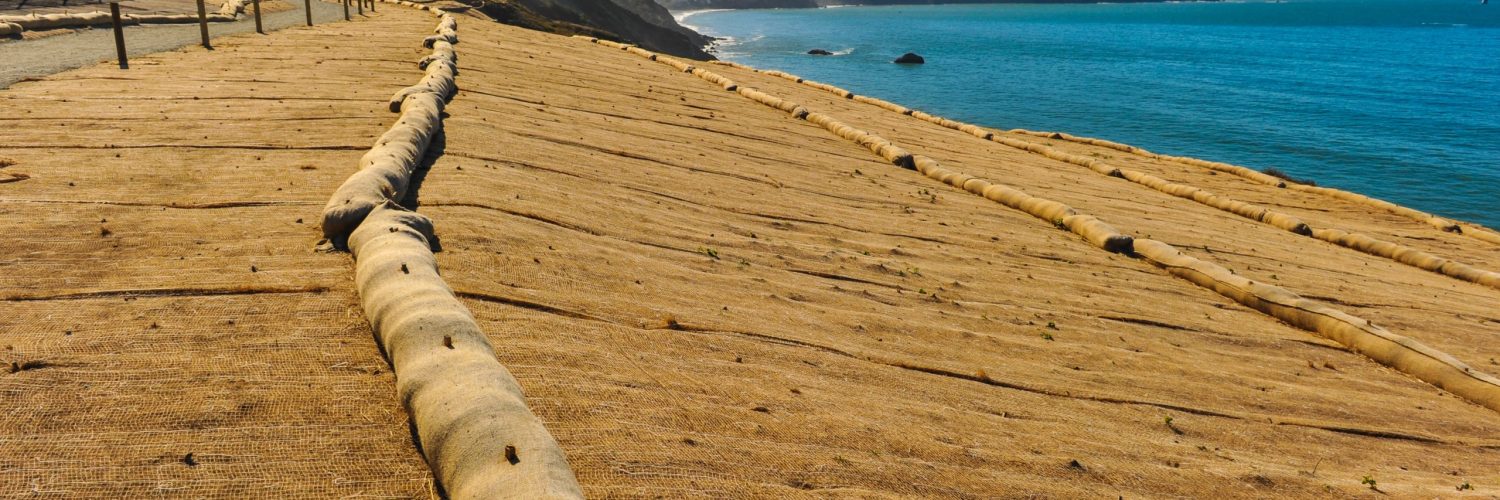- February 22, 2024
- Posted by: wellcoindustries
- Categories: Burlap, Erosion Control
Erosion control is a crucial aspect of environmental management, protecting soil from the destructive forces of wind and water. With the increasing awareness of sustainable practices, the choice of materials for erosion control has become more significant. Among various materials, burlap, a simple, woven fabric made from natural fibers, stands out. But is burlap the best material for erosion control? Let’s delve into the details to find out.

Understanding Erosion Control
What is Erosion?
Erosion is the process by which the earth’s surface gets worn away by natural elements such as water flow and wind. This phenomenon can lead to significant environmental and infrastructural damage if not properly managed.
Methods of Erosion Control
To combat erosion, several methods are employed, ranging from physical barriers to vegetation planting. Materials like burlap are commonly used in these methods to provide immediate protection and aid in the establishment of long-term solutions.
The Role of Burlap in Erosion Control
What is Burlap?
Burlap, also known as hessian in some parts of the world, is a coarse cloth made from jute, hemp, or other natural fibers. Its rugged texture and durability make it a popular choice for various applications, including erosion control.
Benefits of Using Burlap for Erosion Control
- Biodegradability: Burlap is fully biodegradable, making it an eco-friendly option for temporary erosion control measures.
- Cost-Effectiveness: Compared to synthetic materials, burlap is generally more affordable and accessible.
- Versatility: It can be used in various settings, including hillsides, riverbanks, and construction sites.
Limitations of Burlap
Despite its advantages, burlap is not without its limitations. It may degrade too quickly in some environments, and its effectiveness can vary depending on the application.
Comparing Burlap to Other Erosion Control Materials
Synthetic Materials
Synthetic options, like geotextiles, offer longer-lasting protection but at a higher environmental cost.
Coir (Coconut Fiber)
Coir, made from coconut husks, is another natural alternative, offering greater durability than burlap but at a higher price point.
Wood Fiber Blankets
Wood fiber blankets are effective in promoting vegetation growth but can be more expensive and less sustainable than burlap.
Real-World Applications of Burlap for Erosion Control
Case Studies
Several case studies demonstrate the effectiveness of burlap in protecting soil and supporting seed germination in erosion-prone areas.
Expert Opinions
Experts in soil conservation and environmental management often recommend burlap for its balance of cost, effectiveness, and environmental impact.
Installation and Maintenance of Burlap for Erosion Control
How to Install Burlap
Installing burlap for erosion control involves securing it to the soil with stakes or other anchors, ensuring it covers vulnerable areas completely.
Maintenance Tips
Regular inspection and maintenance are crucial to ensure the burlap remains effective over time, especially after heavy rain or wind.
Environmental Considerations
Impact on the Local Ecosystem
Burlap’s natural fibers are less likely to harm local wildlife and vegetation compared to synthetic materials.
Sustainability Factors
Choosing burlap supports sustainable practices by utilizing renewable resources and minimizing waste.
Future Directions in Erosion Control Materials
Innovations
Research continues to explore new materials and methods that offer improved performance and lower environmental impact.
Research Trends
The trend towards sustainable and eco-friendly materials is likely to increase the popularity of natural options like burlap.
Making the Right Choice for Your Erosion Control Needs
Factors to Consider
Selecting the right material for erosion control depends on various factors, including the specific needs of the site, budget constraints, and environmental considerations.
Recommendations
For many applications, burlap represents a balanced choice, offering effective erosion control, affordability, and environmental benefits.
Conclusion
While no single material is perfect for all situations, burlap offers a compelling combination of benefits for erosion control. Its biodegradability, cost-effectiveness, and versatility make it a strong candidate for many erosion control projects. However, the ultimate choice should be based on a comprehensive evaluation of the specific needs and conditions of the project site.
